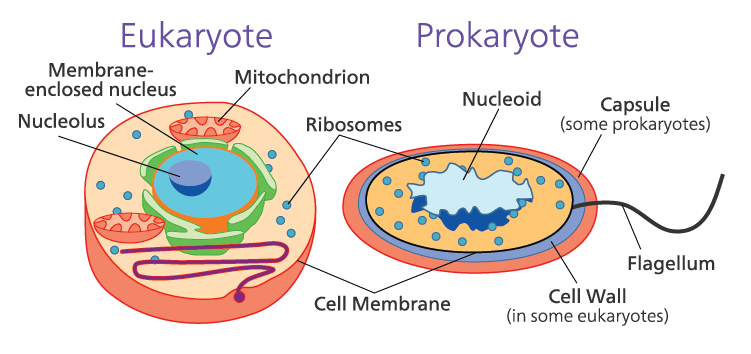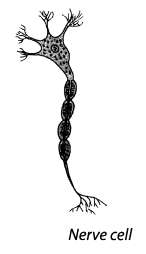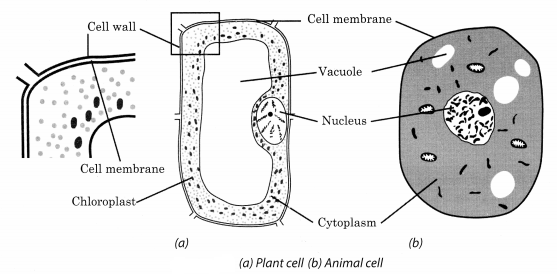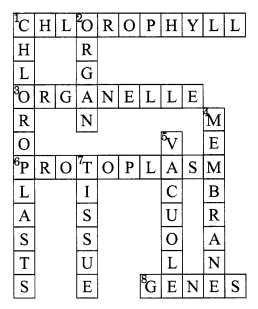NOTES-
Skeletal System
- Bones in our body form the framework that supports the whole body. This framework is called the skeleton.
- Our skeleton is made up of a number of bones and cartilages.
- There are about 650 muscles attached to the various bones in our body.
- The bones are hard and rigid.
- Cartilages are comparatively soft and elastic.
Functions of skeleton
- Skeleton system gives support to the body.
- It protects the inner organs.
- Together with muscles, it gives the body its shape.
- Red blood cells and some white blood cells are produced in the marrow of the bone.
Bones of hands and legs: Bones of arms, thighs, etc., are long. They give strength to our body. Bones of fingers and toes are short. They help us in holding things. The hands and legs are constructed in same pattern as described below: (See Figs).
| Part of hand | Part of leg | Number of Bones |
| Upper arm | Thigh | One long bone |
| Fore arm | Lower leg | Two long bones |
| Wrist | Ankle | Several small bones |
| Palm | Foot | Five bones |
| Fingers | Toe | Each has three small bones (except thumb, which has two small leaves) |
Bone joints: The place where two or more bones meet together is called a joint. In our body, five types of joints are present namely:
- Fixed joints which do not allow movement, e.g., joints of cranium.
- Ball and socket joint allow movement in all directions, e.g., joints between upper arm and shoulder, thigh and hip.
- Pivotal joint allows movement in many planes, e.g., skull makes such joint with first two vertebrae.
- Hinge joints allow movement only in one direction, e.g., fingers, the knee, etc.
- Gliding joints allow only a limited amount of movement, e.g., joints of backbone.
Muscles: The bones are moved by the alternate contractions and relaxations of two sets of muscles.
Tendons: join muscles to the bones.
Ligament: joins two bones.
Bristles: Bristles are hair like structure, connected with muscles. The bristles help to get a good grip on the ground. ‘
Cavity: It is the hollow space or cavity in one bone, into which the other bone fits. Such joint allows movements in all directions.
Gait of animals: Some animals do not have bones. They have muscles which help to extend and shorten the body. During movement, animal first extends the front part of the body, keeping the rear position fixed to the ground. After that animal fixes the front end and releases the rear end. Now animal shortens the body and pulls the rear end forward. During this practice, animal moves forward by a small distance.
Streamlined: The body shape where body tapers at both ends is called streamlined body, e.g., body of birds and fish
NCERT
Exercise Questions
1. Fill in the blanks:
(a) Joints of the bones help in the movement of the body.
(b) A combination of bones and cartilages forms the skeleton of the body.
(c) The bones at the elbow are joined by a hinge joint.
(d) The contraction of the muscles pulls the bones during movement.
2. Indicate true (T) and false (F) among the following sentences.
(a) The movement and locomotion of all animals is exactly the same. ( )
(b) The cartilages are harder than bones. ( )
(c) The finger bones do not have joints. ( )
(d) The fore arm has two bones. ( )
(e) Cockroaches have an outer skeleton. ( )
Solution:
a) False
b) False
c) False
d) True
e) True
3. Match the items in Column I with one or more items of Column II.
Solution:
| Column I | Column II |
| Upper jaw | Have fins on the body |
| Fish | Has an outer skelton |
| Ribs | Can fly in the air |
| Snail | is an immovable joint |
| Cockroach | Protect the heart |
| Shows very slow movement | |
| Have a streamlined body |
Solution:
| Column I | Column II |
| Upper jaw | is an immovable joint |
| Fish | Have fins on the body, Have a streamlined body |
| Ribs | Protect the heart |
| Snail | Has an outer skeleton and Shows very slow movement |
| Cockroach | Has an outer skeleton and Can fly in the air |
4. Answer the following:
(a) What is a ball and socket joint?
(b) Which of the skull bones are movable?
(c) Why can our elbow not move backwards?
Solution:
a) The rounded end of one bone fits into the cavity (hollow space) of the other bone. Such a joint allows movements in all directions, which is called ball and socket joint.
b) Lower jaw
c) Our elbow cannot move backwards because it has hinge joints which only allow back and forth movement.














